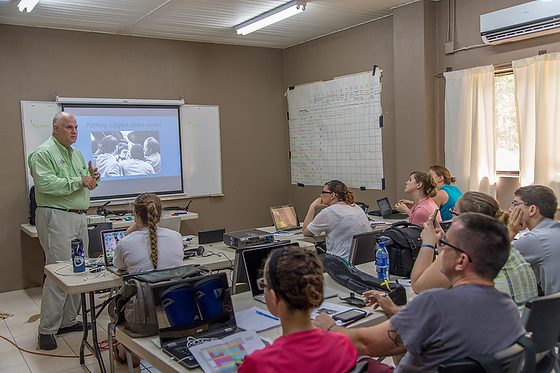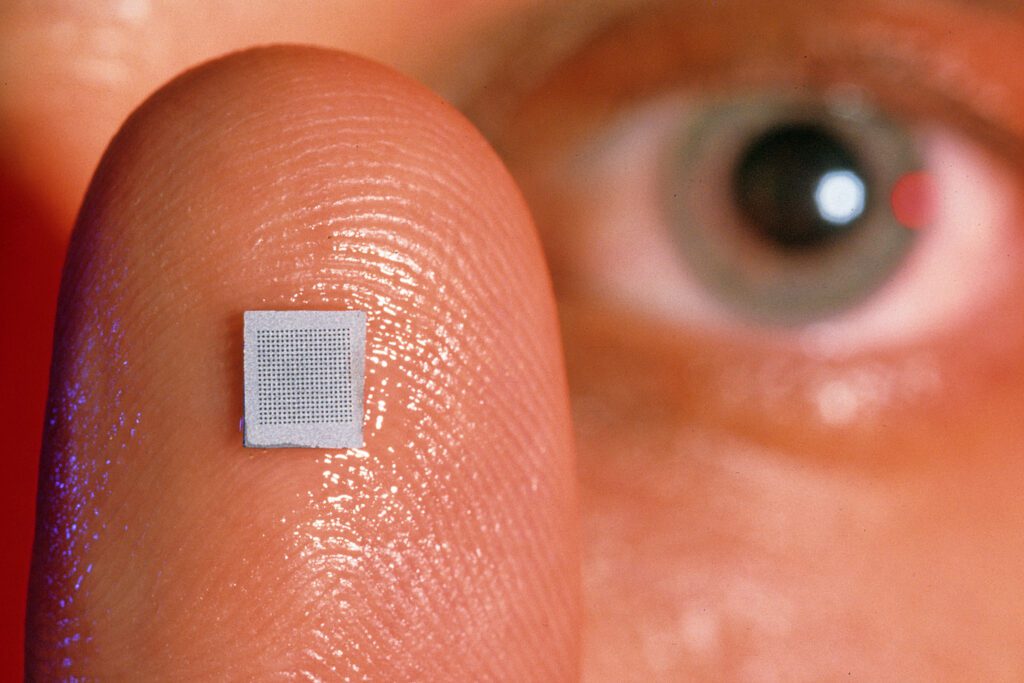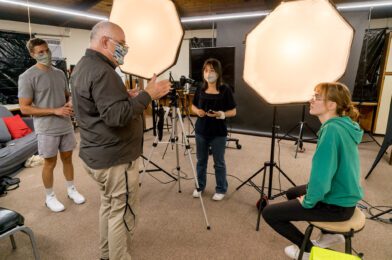Photo by Dennis Fahringer

While we do lectures, we are careful to show examples. [Nikon D5, Sigma 24-105mm f/4 DG OS HSM Art Lens, ISO 1100, ƒ/4, 1/100]
If I were to ask you what you do or what does your company do what is your answer? Maybe you start to stumble around trying to find words and even say things like “Well …”
One of the greatest struggles to communicate what you do or what your company does is that words alone often do not do justice to what you do. No matter how well you craft your words it still can fall short. Too often using words alone takes too long and you lose your audience.
Visual content reaches an individual’s brain in a faster and more understandable way than textual information. Or, more accurately, a person’s brain is hardwired to recognize and make sense of visual information more efficiently, which is useful considering that 90 percent of all information that comes to the brain is visual.

Storytelling tactics focus on different functions of the brain related to understanding and perception. The brain processes images 60 times faster than text, and 92 percent of consumers want brands to create stories around ads. Because of this, marketers should be delivering linear content with clear narratives and using images to tell their stories.
I work with clients by listening to them and asking lots of questions to help pull out the most compelling storyline that will engage customers to pay attention to what they do. I teach my clients the seven elements they need in their story and then capture that in a visual storyline to build their brand.
A great example of how I did this was with a professor at Georgia Tech. We played basketball together during our lunch breaks. While standing on the sideline waiting for the next game I was just asking what he was working on.
He was creating a bomb detector for about $30. He had presented this a few times but no one was willing to give him a grant. I asked if he would like my help. The solution was simple. By changing his visuals with his story then presented at the next conference and got a $1 million dollar grant.

Size of experimental microneedle array is shown by its placement on the researcher’s finger. There are 400 needles in the array. “Microneedles” much thinner than the diameter of a human hair could be the basis for a new drug delivery technique able to administer small quantities of high-potency medications through the skin without causing pain.
I really do believe that “Seeing is believing” for most of the population. It leads to a way of teaching that “seen evidence” can be easily and correctly interpreted, when in fact, interpretation may be difficult.
Give me a call and let me help capture your story in a visual way so that you too can make what you do understandable to your potential customers.
I also teach this to people in workshops. This summer I taught a workshop in Nicaragua and in Togo, West Africa. In Nicaragua James Dockery, ESPN Video Editor and Jeff Raymond, Director of Visual Communications for ABWE led 9 students through the process of visual storytelling. In Togo, West Africa professor Patrick Davison, UNC School of Media/Journalism worked with Jeff and I in leading 10 students through the same process.
Here are two examples of storytelling done by those students in just one week.
https://player.vimeo.com/video/180096388
https://player.vimeo.com/video/178934277
Give me a call if you want me to help you in telling your story or to help teach your team how to do visual storytelling to build your brand.

